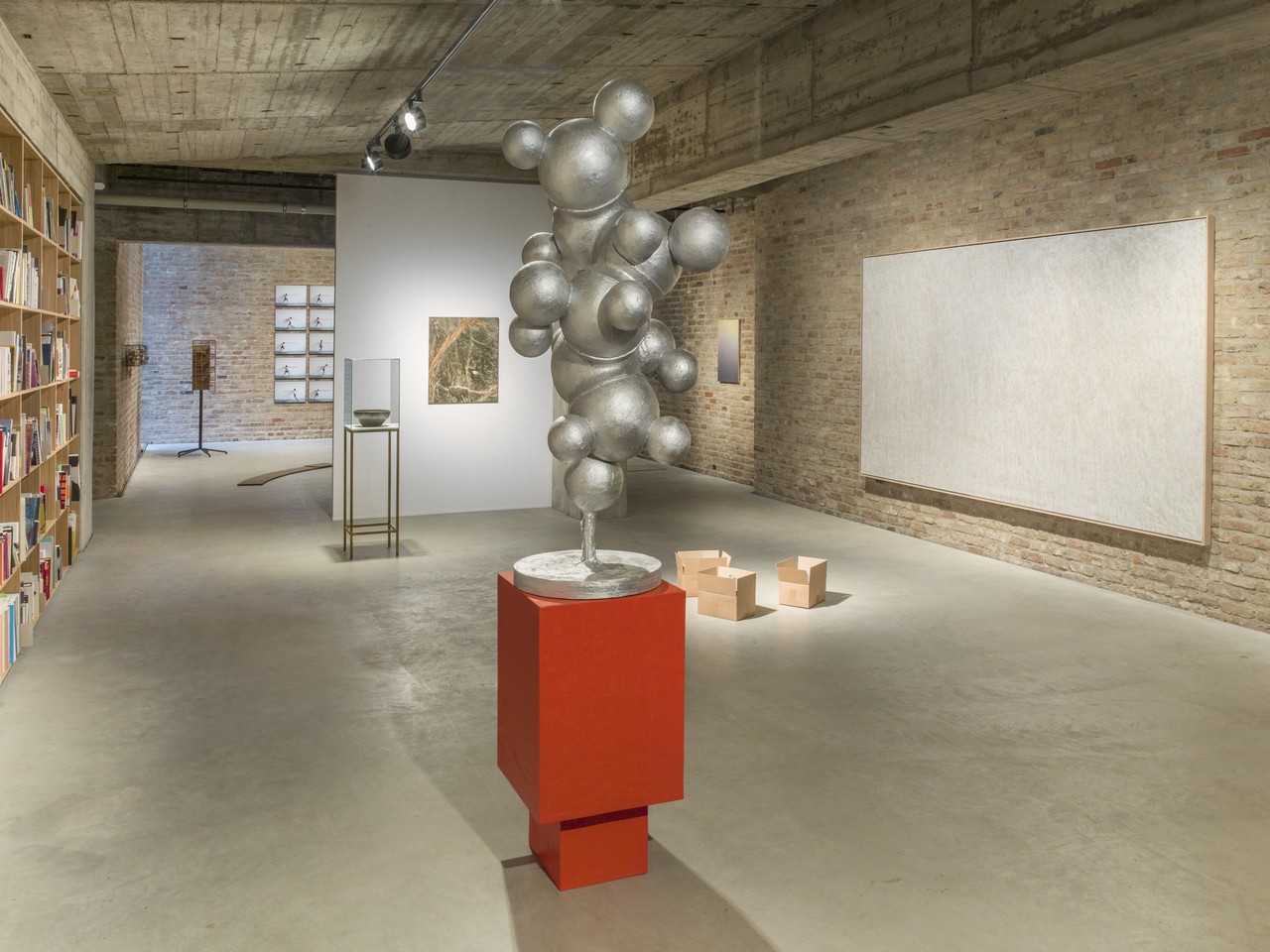Three Positions. Six Directions. Chapter I
Chapter I: The Brutalist Ideal
20 Jan - 12 Feb 2017
THREE POSITIONS. SIX DIRECTIONS. CHAPTER I
The Brutalist Ideal
Atelier Van Lieshout, Mathieu Bonardet, Alicja Kwade, Navid Nuur, Pieter Vermeersch, Franz Erhard Walther, Christoph Weber
20 January – 12 February 2017
As the title suggests, the very location of the exhibition is at the core of its theme: ST. AGNES both contains it and inspires it. A show in three parts presents both impressions from and reactions to the architecture, the history, and its current repurposing, as expressed through a changing group of works by artists ranging from historical to contemporary and emerging. A single work remains throughout the run of the three “chapters” over three months, Franz Erhard Walther’s Drei Standstellen. Sechs Richtungen (1977), serving as the constant pulse of the exhibition as the space of the gallery is reconfigured for each changing show.
Chapter I: The Brutalist Ideal
Atelier van Lieshout, Mathieu Bonardet, Navid Nuur, Pieter Vermeersch, Franz Erhard Walther, Christoph Weber
ST. AGNES is a prime example of Brutalist architecture. More than style or fashion, it was a mentality and even a philosophy that inspired the simplicity, physical and ethical gravity, and economy that the building embodies. It is with these same reductive ideas that the artworks presented here were born. With the dedication to a single material (i.e. Christoph Weber) or the focus on the simple-yet-complex relationship between the body, space and matter (i.e. Mathieu Bonardet) we sense a distillation to the essence in these works. And this efficiency is reflected as well in the ideas that come from Atelier van Lieshout’s Slave City series, extending these principles to a societal perspective.
Brutalism also embraced the power of the neutral space, envisioning an architectural ideal where buildings are efficient containers wherein human use activates and fulfils its potential. The sculptural interactive works of Franz Erhard Walther exemplify these ideas most forcefully and effectively, both as static elements and as activated performances. And towards its goal to neutralize space, the absence of decoration played an important role in the execution of these structures, and it becomes an interesting discourse as we determine whether the purpose of texture or pattern is necessity or decorative, and how we play a role in defining that (i.e. Navid Nuur, Pieter Vermeersch).
This show was created in collaboration with r/e projects.
The Brutalist Ideal
Atelier Van Lieshout, Mathieu Bonardet, Alicja Kwade, Navid Nuur, Pieter Vermeersch, Franz Erhard Walther, Christoph Weber
20 January – 12 February 2017
As the title suggests, the very location of the exhibition is at the core of its theme: ST. AGNES both contains it and inspires it. A show in three parts presents both impressions from and reactions to the architecture, the history, and its current repurposing, as expressed through a changing group of works by artists ranging from historical to contemporary and emerging. A single work remains throughout the run of the three “chapters” over three months, Franz Erhard Walther’s Drei Standstellen. Sechs Richtungen (1977), serving as the constant pulse of the exhibition as the space of the gallery is reconfigured for each changing show.
Chapter I: The Brutalist Ideal
Atelier van Lieshout, Mathieu Bonardet, Navid Nuur, Pieter Vermeersch, Franz Erhard Walther, Christoph Weber
ST. AGNES is a prime example of Brutalist architecture. More than style or fashion, it was a mentality and even a philosophy that inspired the simplicity, physical and ethical gravity, and economy that the building embodies. It is with these same reductive ideas that the artworks presented here were born. With the dedication to a single material (i.e. Christoph Weber) or the focus on the simple-yet-complex relationship between the body, space and matter (i.e. Mathieu Bonardet) we sense a distillation to the essence in these works. And this efficiency is reflected as well in the ideas that come from Atelier van Lieshout’s Slave City series, extending these principles to a societal perspective.
Brutalism also embraced the power of the neutral space, envisioning an architectural ideal where buildings are efficient containers wherein human use activates and fulfils its potential. The sculptural interactive works of Franz Erhard Walther exemplify these ideas most forcefully and effectively, both as static elements and as activated performances. And towards its goal to neutralize space, the absence of decoration played an important role in the execution of these structures, and it becomes an interesting discourse as we determine whether the purpose of texture or pattern is necessity or decorative, and how we play a role in defining that (i.e. Navid Nuur, Pieter Vermeersch).
This show was created in collaboration with r/e projects.

